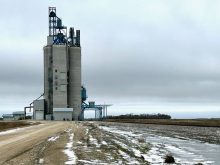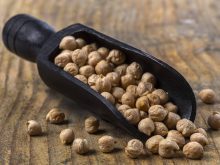MarketsFarm — The number of acres seeded for dry beans in Canada in 2020-21 was at its highest level in more than a decade. But this upcoming crop year, acreage and yields are expected to return to normal.
Dennis Lange, pulse specialist for Manitoba Agriculture at Altona, said he hadn’t seen yields like last year’s since 2005. However, he warns competition from other crops will prevent a bin-busting year for dry beans.
“We have other commodities like soybeans and canola that have had strong pricing, both old-crop and new-crop. I think what we’ll probably end up with is somewhere around (2019 levels)… A slight drop, but a good number.”
Read Also

Selling GMO tomato seeds to Canadian gardeners ‘reckless’ say advocates
Selling genetically-modified purple tomato seeds to home gardeners could raise the risk of contamination of organic vegetable varieties and hamper farmers’ ability to save their own seed, say a group of advocates.
According to Agriculture and Agri-Food Canada, Canadian growers harvested 490,000 tonnes of dry beans in 2020-21 off 457,200 seeded acres, a 54 per cent climb in production and 16 per cent increase in acres from the previous year.
In Manitoba alone, 204,700 acres were seeded for dry beans (a 22 per cent increase from 2019-20), producing 199,400 tonnes (up 82 per cent) and comprising nearly half of the country’s edible bean crop, according to Statistics Canada data. It was the province’s biggest harvest since 2002.
For 2021-22 nationwide, seeded acres are expected to return to 2019-20 levels at 395,367, according to an early estimate from AAFC, while production will decrease to 355,000 tonnes. Carry-in stocks are also expected to be higher this year than in the previous year.
Dry beans are more difficult to grow than soybeans, Lange added, as the latter are more tolerant of soil moisture and herbicides. On the other hand, dry beans can mature faster and grow better in drier soil. He added that a healthy amount of moisture in the spring is the first step toward a strong yield.
“Dry beans, generally, don’t get planted until after May long weekend,” he said. “Timely rains throughout the growing season, timely weed control for both (soybeans and dry beans) are important, but dry beans especially so… (For dry beans), you don’t have that same type of rescue treatment when it comes to herbicide options as you do with soybeans.”
High yields and high quality this year may hinge on how much moisture arrives in September, he said.
“If you end up with having good growing conditions all year, but then September gets kind of wet, then that’s where quality can really be affected on dry beans, and it’s all about quality when it comes to dry beans.”
— Adam Peleshaty reports for MarketsFarm from Stonewall, Man.
















